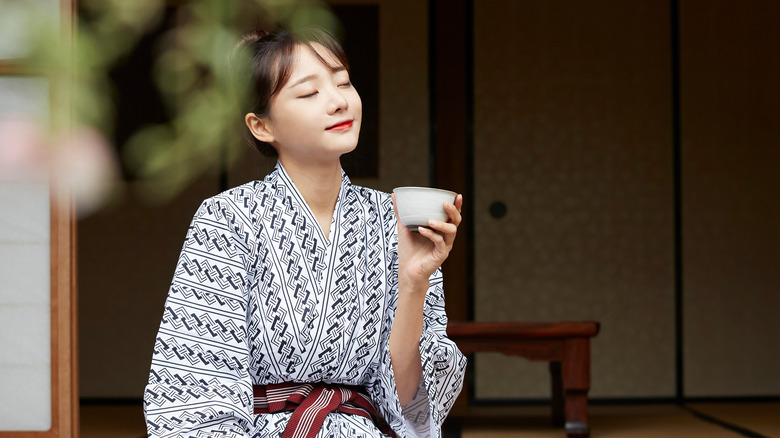Ma, Or Negative Space, Is A Japanese Concept That Can Help You Meditate
If you live a busy life, your goal is often to get as much done as possible every single day. The concept of pausing for a moment of silence between checking things off your to-do list can feel alien and sometimes even uncomfortable. Add to that the hustle culture that is often touted as the path to success, and it's a miracle we take any downtime at all. Think about the last time you found yourself with some time to spare. Did you feel bad about not filling that time with another chore? If you're aware of the Japanese concept of Ma, then perhaps you used that time to simply do nothing.
Many people in the Western world are deeply uncomfortable with lulls in conversation and prolonged periods of silence, but that's not the case in Japan. The central idea behind the concept of Ma is embracing negative space, to see nothingness as something useful, even necessary. It might seem challenging at first, but when embraced, Ma can help you meditate as well.
Ma is about embracing stillness
If you've ever watched Japanese theater (especially Noh theater) or carefully observed the Japanese art of floral arrangements called Ikebana, you may have noticed something unique — empty spaces and pauses, otherwise known as Ma. In kanji, "Ma" is illustrated with a door (門) and a sun (日). The sun, which sits in the middle (間), symbolizes the space between. According to a Medium article by Kiyoshi Matsumoto, the author of "Japan Unmasked," Ma concerns "nothing but energy and feeling."
The Japanese actually practice silence in their conversations, leaving meaningful lulls in between words that are meant for reflection and respect. Even their architecture and gardens employ the energy and life that space has to give. To the Japanese, empty spaces don't signify something negative. They're considered sacred — a chance to connect with yourself, those around you, and a higher power. "An everyday example of Ma can be seen in the respectful Japanese bow," Matsumoto added. "People make a deliberate pause at the end of a bow before they come back up — the reason being as to ensure there is enough Ma to convey feeling and look respectful."
How to use Ma to meditate
In a modern world built for activity and engagement, it can feel impossible to stop sometimes. Yet, there is a lot to be said about what happens to your body when you meditate every day. The beauty of Ma is that it can be practiced in our daily lives, not just in meditation.
According to mindfulness advocate Lindsay Miner, Ma means being mindful about what we fill our lives with — things or activities. Miner, who has practiced the Japanese concept of negative space herself, has learned two valuable lessons from the experience. "Silence is sacred," she said. "The more that we can learn to love silence, the more peace and calm we will feel." Try and find something that prioritizes silence in your weekly routine — it could be a walk without listening to music or simply sitting on your porch and looking at the trees in your yard. The idea is to intentionally train your mind to be comfortable with pausing.
The Japanese also believe that small day-to-day activities, done mindfully and purposefully, can bring happiness. Miner shared that enjoying the "time it takes to do things" can be helpful with staying in the present. As Kiyoshi Matsumoto said via Medium: "The key point to take away from the concept of Ma is to take the time and space to step back, think and see from the whole perspective." Once you've altered your mindset using Ma, meditating becomes so much easier.


